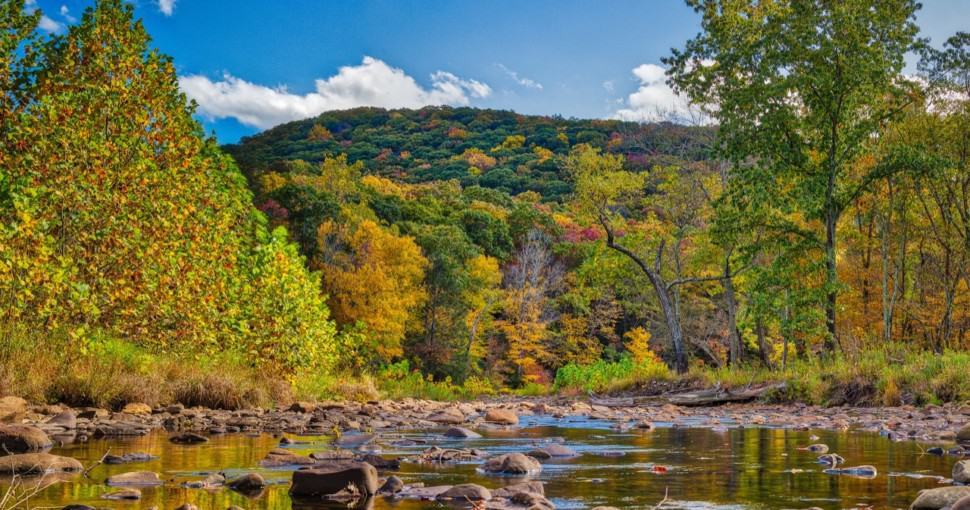West Virginia’s ecology and wildlife benefit from vegetation. Pollutants are filtered away by vegetation, which also helps to prevent erosion. With its huge, diversified forests and abundant rainfall, West Virginia is a perfect habitat for a wide variety of plants, fungi, and different hardwood tree species, from oak to hickory and maple trees.
Contents
- 1. Sugar Maple (Acer saccharum)
- 2. Aspen Trees (Populus tremuloides)
- 3. Eastern Redbud (Cercis canadensis)
- 4. Red Maple (Acer rubrum)
- 5. Flowering Dogwood (Cornus florida)
- 6. Downy Serviceberry (Amelanchier arborea)
- 7. Tulip Poplar (Liriodendron tulipifera)
- 8. White Ash (Fraxinus americana)
- 9. Basswood (Tilia americana)
- 10. American Beech (Fagus grandifolia)
- 11. Black Cherry (Prunus serotina)
- 12. Black Oak (Quercus velutina)
- 13. Black Walnut (Juglans nigra)
- 14. Cedar Trees (Cedrus)
- 15. Cottonwood (Populus)
- 16. Cucumber Tree (Magnolia acuminata)
- 17. American Elm (Ulmus americana)
- 18. Western Hemlock (Tsuga heterophylla)
- 19. Hickory (Carya)
- 20. Black Locust (Robinia pseudoacacia)
- 21. Pitch pine (Pinus rigida)
- 22. Sweetgum (Liquidambar styraciflua)
- 23. Sycamore (Platanus occidentalis)
- 24. Yellow Birch (Betula alleghaniensis)
- 25. Sourwood (Oxydendrum arboreum)
West Virginia is home to some of the planet’s oldest trees. It has a broad range of species, including Yellow Birch, Eastern Redbud, Black Locust, and Tulip Poplar, as well as Sugar Maple and Sycamore Maple.
The climatic condition in West Virginia is humid and temperate, with hot weather in the summers, mildly cool winters, and modest rainfall throughout the year. There are eight state forests in West Virginia, totaling about 70,000 acres of forestland. As a result, it is the third most wooded state in the United States. The bulk of the trees in the state are hickory and oak, with northern hardwoods, oak and pine trees, and maple trees next on the list.
Peering out all over the West Virginia highlands and taking in the vibrant colors of October is a stunning sight. Once the leaves are at their finest, the landscape is awash in red, yellow, and orange shades.
As they lose their foliage in autumn, some tree species provide a rainbow of colors. They may originate with one color and then change to one or two other hues as the cycle progresses, as seen with the Sugar Maple and Sweetgum species. In this post, we’ll discuss the most common tree species found in West Virginia.
1. Sugar Maple (Acer saccharum)
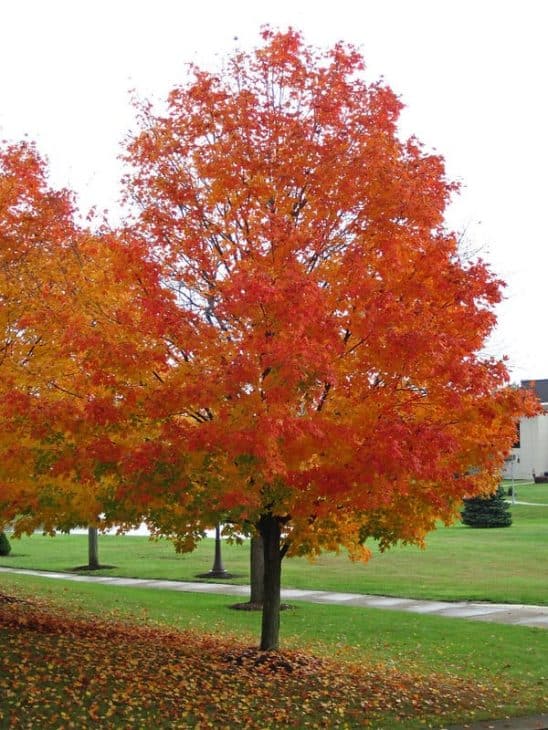
Apart from the monumentally useful trait of producing maple sugar for maple syrup, the Sugar Maple is one of the most vibrant and colorful trees in West Virginia. Its leaves go through multiple color changes, from green to yellow to orange and finally red before they fall. It is the state tree for West Virginia, Vermont, New York State, and Wisconsin, growing up to 60 to 70 feet.
2. Aspen Trees (Populus tremuloides)
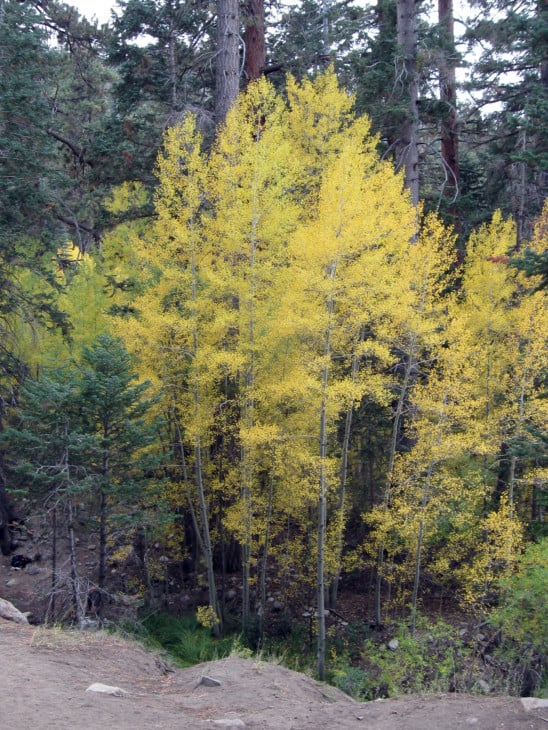
The Quaking Aspen is one of the most widespread trees in the United States, and its relatives can be found all over the world. Aspen trees flourish in West Virginia and Wisconsin. They flower from April to May and grow up to 40 to 50 feet tall. The Quaking Aspen has a pyramidal or spherical crown with spreading limbs. The bark is extremely thin, and the leaflets are ovately shaped.
3. Eastern Redbud (Cercis canadensis)
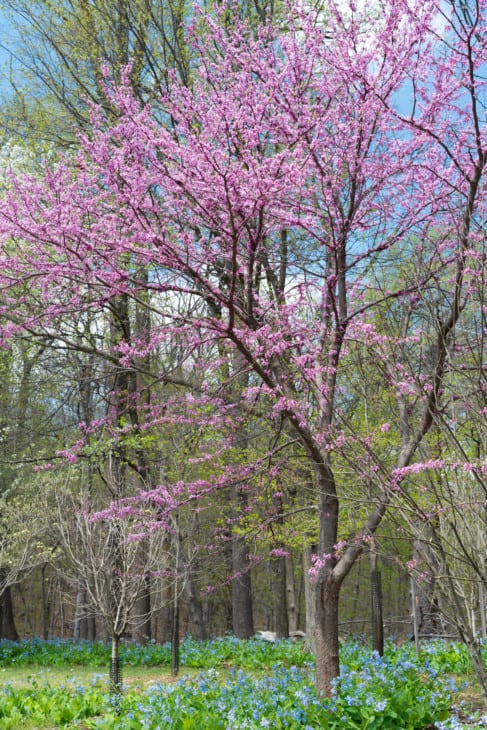
Eastern redbud trees thrive on alkaline or sweet soils with higher limestone content and are among the first indigenous plants to bloom in West Virginia. The flowers blossom in April, and it normally grows to be between 20 and 30 feet in height, with a contorted trunk that is smooth and darkish while young but becomes jagged and scaly with crimson blotches as it matures.
4. Red Maple (Acer rubrum)
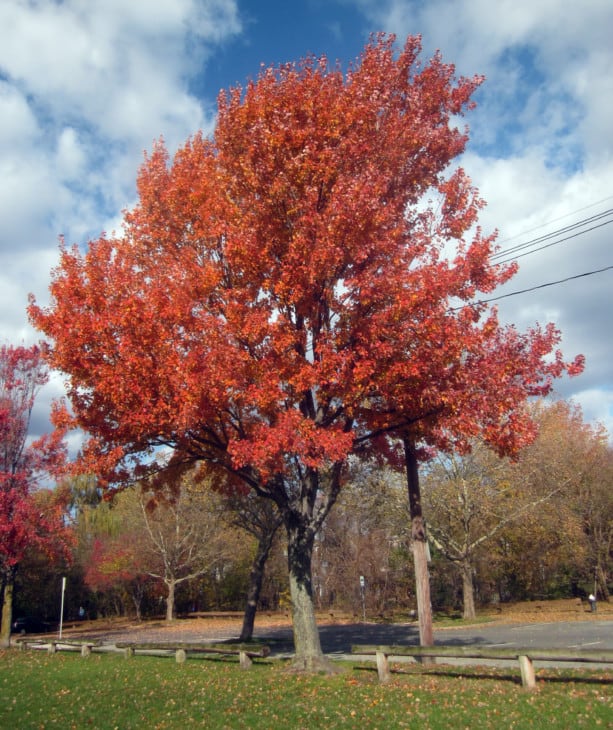
The presence of the Red Maple’s tree contributes to the red autumn hues all throughout the eastern U.S. It reaches a height of 40 to 50 feet on average. It features dark green leaves that become crimson in the fall and reddish flowers in the spring. This tree is cold-hardy and thrives in moist, somewhat acidic settings with plenty of sunlight.
5. Flowering Dogwood (Cornus florida)
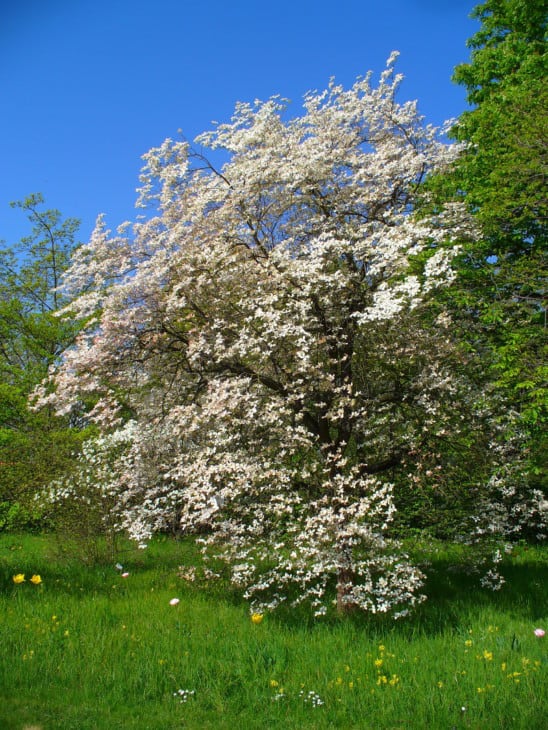
In addition to the Red Maple, the Flowering Dogwood is another species that adds reddish hues in the fall. It has crimson, golden, deep-purple, and maroon foliage in the autumn. The trees reach a height of 20 to 25 feet. Dogwood trees are quite well-known for their attractiveness and are the official trees for Virginia and Missouri.
6. Downy Serviceberry (Amelanchier arborea)
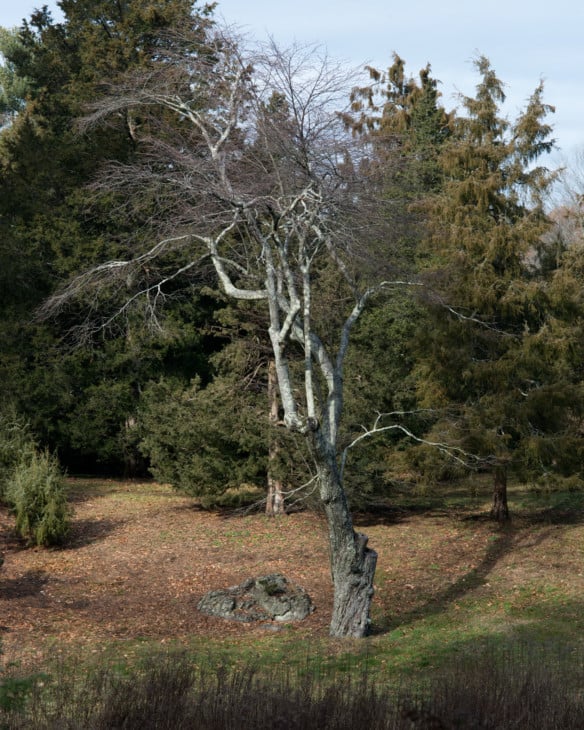
The Downy serviceberry tree is a deciduous shrub or small tree, reaching as high as 30 feet or more, with a 16-inch-wide trunk. The branches start out purplish but turn gray as the tree matures. It flowers in March, producing white flowers and a dark red to purple berry-like pomme fruit from June to August. It is also found in Nebraska, Alabama, and southern Mississippi.
7. Tulip Poplar (Liriodendron tulipifera)
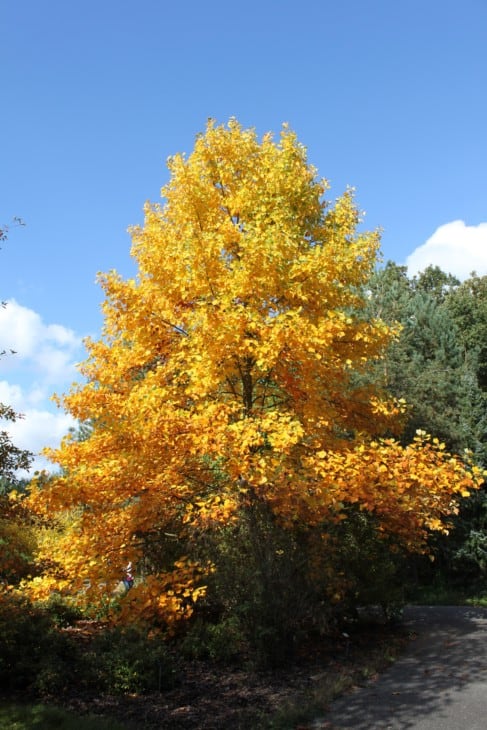
Tulip Popular is a broadleaf tree that grows to be towering, deciduous, and long-lived. The leaflets have a tulip-like form and are alternated. Tulip trees are one of the straightest and highest trees in the forest, with the ability to reach heights of 200 feet. The blossoms are tulip-shaped, and the fruit is a cone-shaped structure with several winged samaras arranged around a central stem.
8. White Ash (Fraxinus americana)
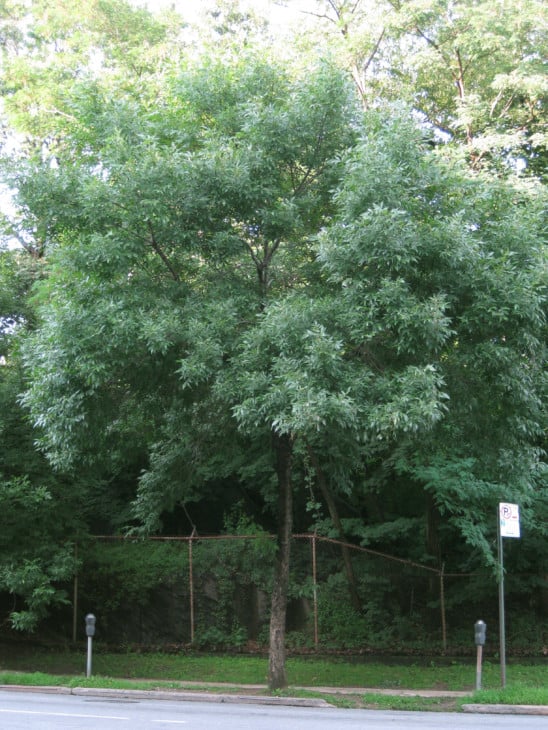
White Ash trees are native to easter North America and are a shade-tolerant species that grows well in well-drained soils. They can reach heights of 80 feet with a rounded or conical crown. It has colorful fall foliage of yellow, orange, and purples leaves. The ashy-gray bark is smooth with some interlacing patterns.
9. Basswood (Tilia americana)
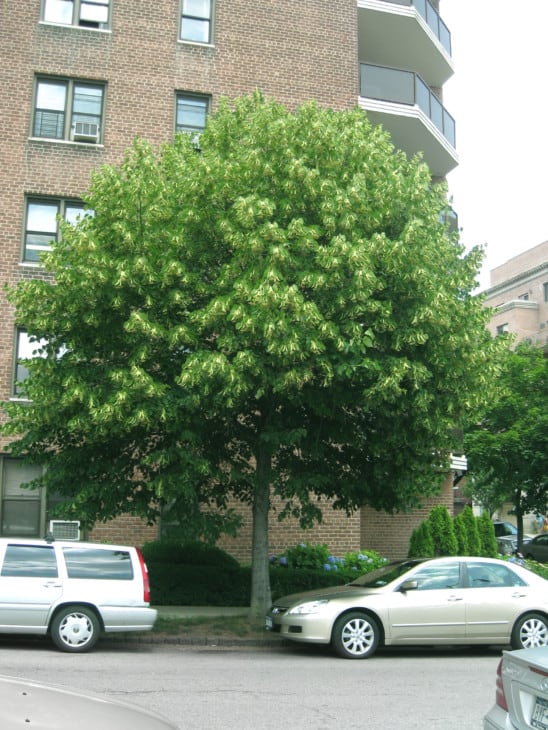
Basswood trees grow to be 60 to 80 feet tall, with a thick canopy and scaly wrinkles and furrows on their grey bark. The heart-shaped, roughly serrated leaves are glossy on top and dull underneath. It has inconspicuous yet aromatic flowers that emerge in June. Oklahoma, Michigan, Manitoba, Tennessee, North Dakota, Kansas, Minnesota, North Carolina, Nebraska, Arkansas, and New Jersey are all part of its native regions.
10. American Beech (Fagus grandifolia)
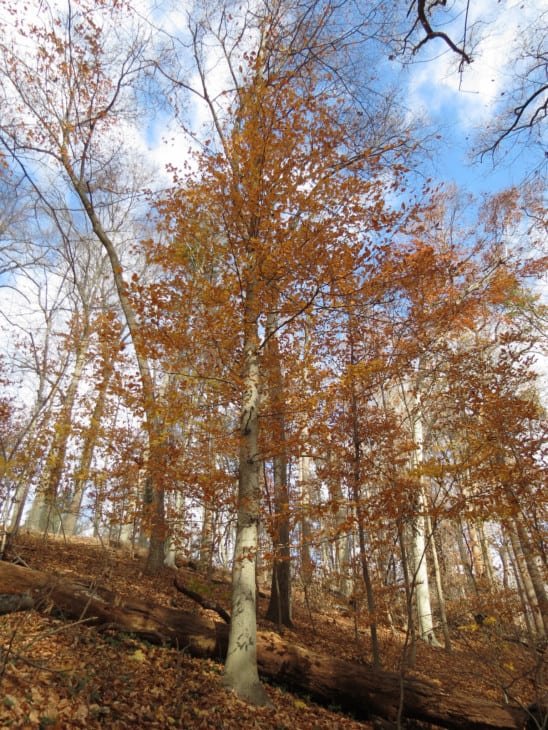
The American Beech is a towering deciduous tree with light-gray, smooth bark and highly serrated, intricately veined dark green leaflets. It can grow to be 50 to 70 feet tall. In the fall, the leaves turn a coppery hue and stay on the tree deep into the cold season. It blooms in April and May with yellowish-green florets.
11. Black Cherry (Prunus serotina)
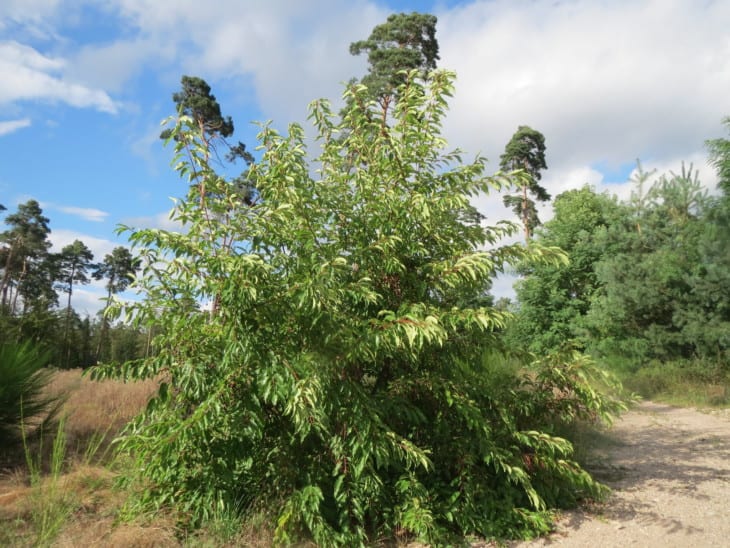
Black Cherry trees can reach heights of 50 to 80 feet and thrive in rich loam soils. In late May, aromatic white flowers bloom, accompanied by glossy crimson to blackberries in late summer. Its green foliage turns yellow and burgundy red in the fall. This tree has significant ecological importance because it is home to a variety of birds, insects, and animals.
12. Black Oak (Quercus velutina)
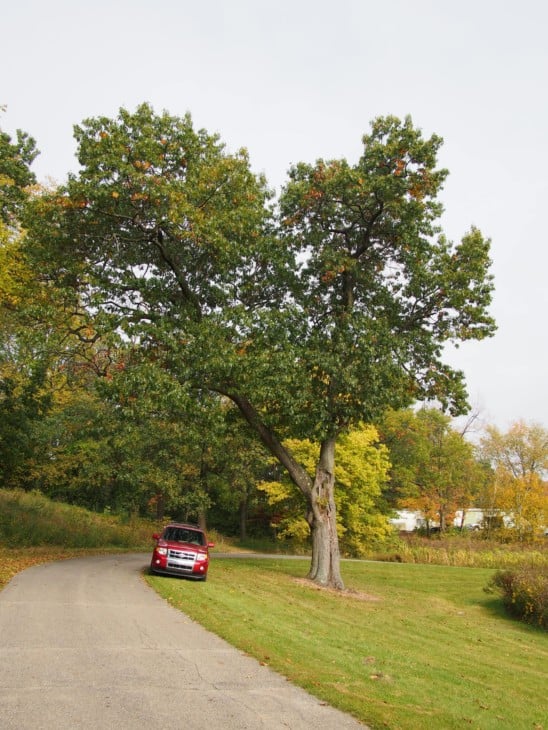
Immature Black Oak trees have gray, smooth bark, while older trees have dark, rough, and jagged bark. The tree has a vast spread of limbs and can grow to be 50-80 feet tall. The top surface of the leaves is a vivid green, while the lower parts are pale and covered in scattered tiny hairs. It has a native range that extends throughout Florida, West Virginia, Maine, and Texas.
13. Black Walnut (Juglans nigra)
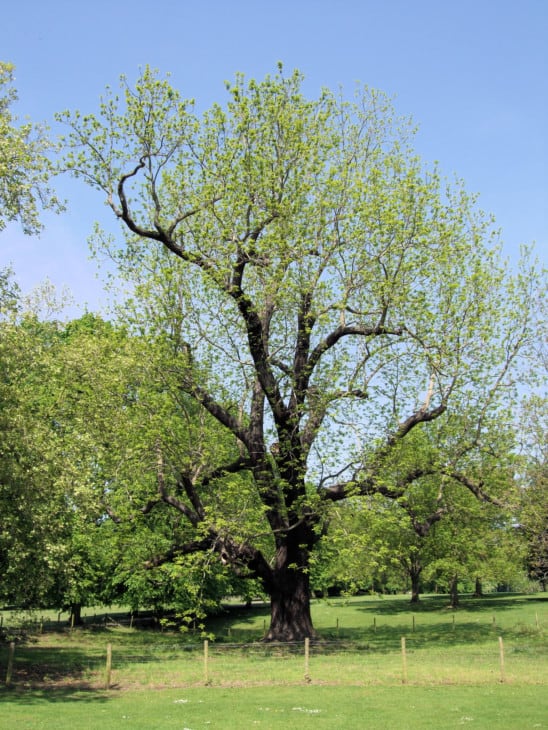
The Black Walnut tree can grow to be 50 to 75 feet tall. It has yellowish-green flowers that bloom in late spring. When its nuts fall to the ground, they turn black and stain pavements and clothing. West Virginia even has a Black Walnut Festival held every October, drawing over 50000 people to the 4-day event.
14. Cedar Trees (Cedrus)
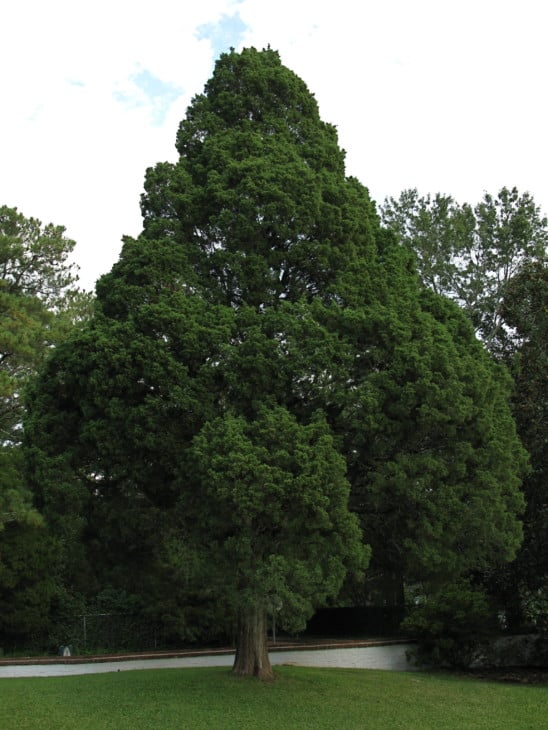
Commonly found Cedar trees in West Virginia include the Eastern redcedar and White-cedar trees. They have 1/16 inch long, scale-like leaves. Redcedar has pointed leaves, while White-cedar has rounded leaves. The bark is ashy gray to reddish-brown, thin, fibrous, and has ridges and shallow furrows. Ordinarily, they grow from 20 to 60 feet tall and are long-living trees.
15. Cottonwood (Populus)
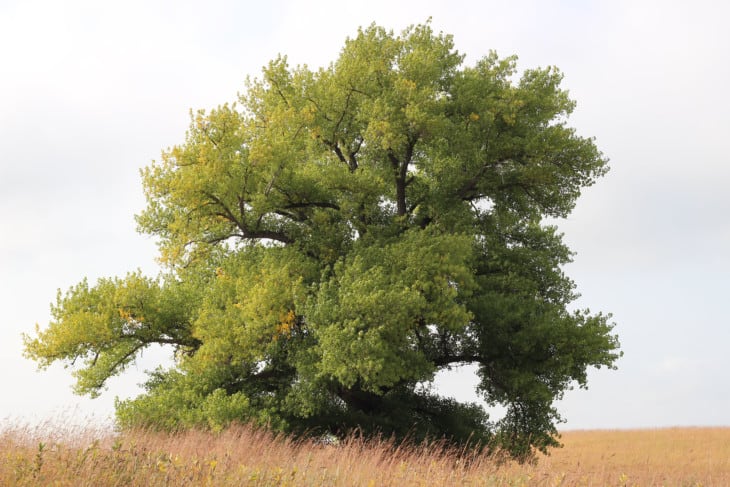
Poplars can reach heights of more than 70 feet, with alternating, plain deciduous leaves with coarse pointed ends. The leaves of the trees turn a bright yellow color in autumn. Wind-pollinated flowers bloom in the spring just before leaves emerge between March and May. Male or female blooms can be seen in hanging catkins on trees.
16. Cucumber Tree (Magnolia acuminata)
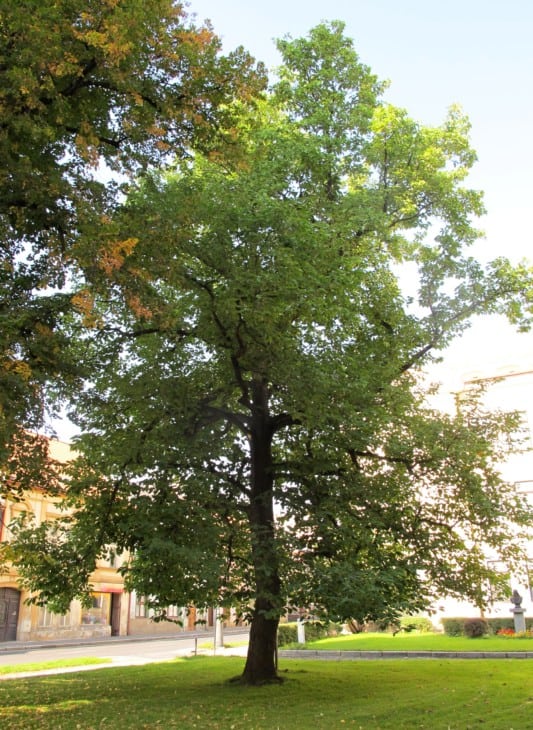
Cucumber trees in West Virginia have 6- to 10-inch-long leaves with smooth margins and a yellow-green shade. The bark is fissured into flaky ridges, brown or reddish-brown when rubbed. With a pyramid-shaped crown and an upright trunk, it will reach a height of 60-80 feet.
17. American Elm (Ulmus americana)
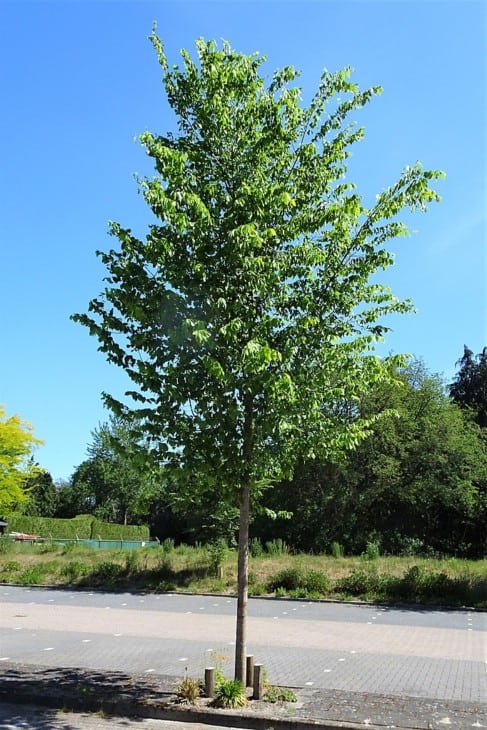
The American Elm is a massive, tall deciduous tree indigenous to eastern North America. American elms are a fast-growing tree that can reach a height of 50 feet with broad, glossy, double-toothed leaves that turn a yellowish to dark green tint as it matures. The bark has a brittle feel and is grey and deeply grooved. American Elm trees produce leaves that turn yellow in autumn.
18. Western Hemlock (Tsuga heterophylla)
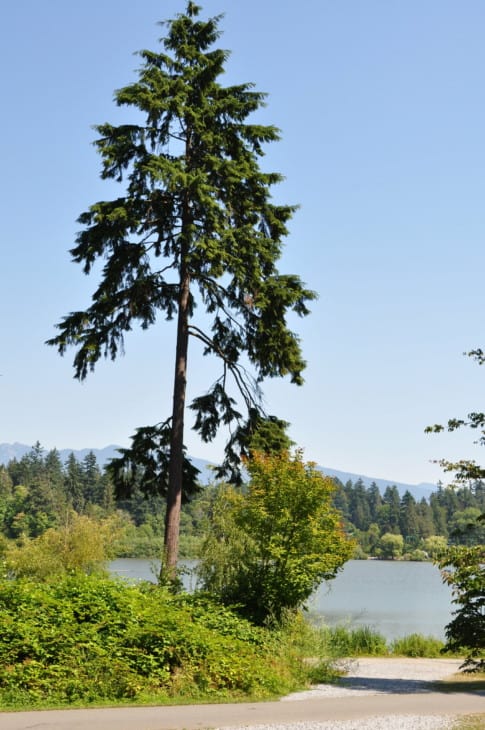
Every district in the state has western hemlock growing along moist channels and at the edges of marshes. The hollow stem has several branches, and the huge, dark-green leaves with prominent veins have rough, sharp teeth around the borders. It is a huge tree that can reach a height of 30 to 50 meters.
19. Hickory (Carya)
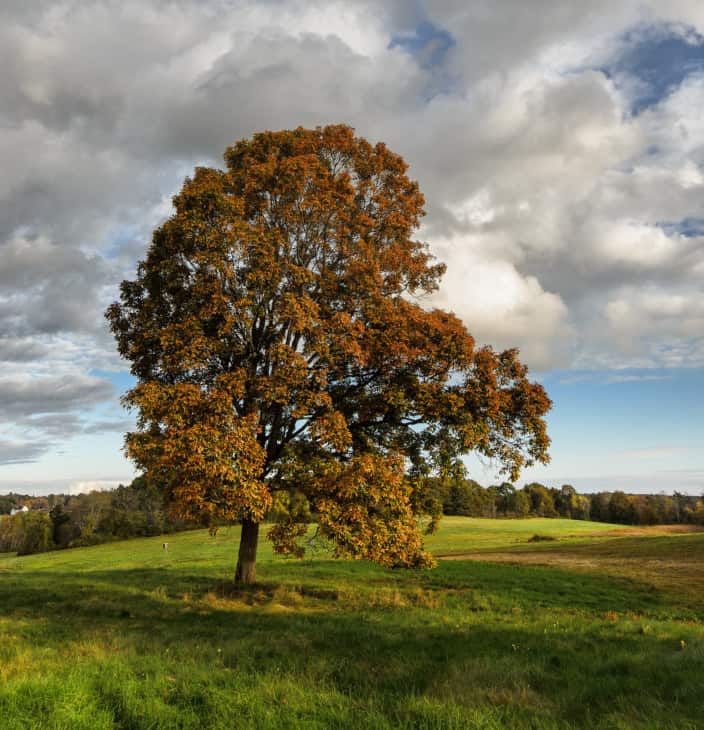
There are several tree species that develop golden leaves in the fall; however, the Hickory family contributes the with the most proportion in West Virginia’s woodlands. When the Shellbark Hickory, Shagbark Hickory, Pignut Hickory, and Mockernut Hickory turn, their foliage appears dull yellow or brownish-yellow.
20. Black Locust (Robinia pseudoacacia)
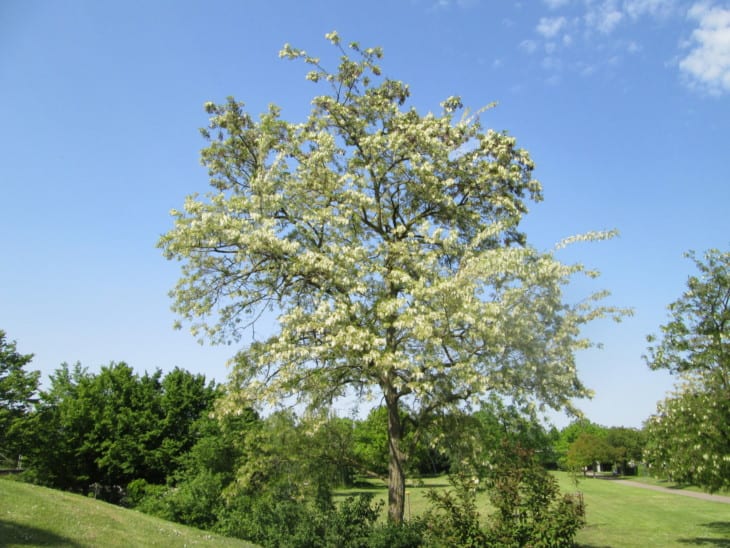
In autumn, the Black Locust produces yellow foliage, contributing to West Virginia’s vibrant fall colors. It has 8 to 14 inches long leaves with 7 to 19 alternate leaflets. The leaves typically have spines where they attach to the twig. The bark is reddish-brown to almost black, with scaly, interlacing, fibrous ridges.
21. Pitch pine (Pinus rigida)
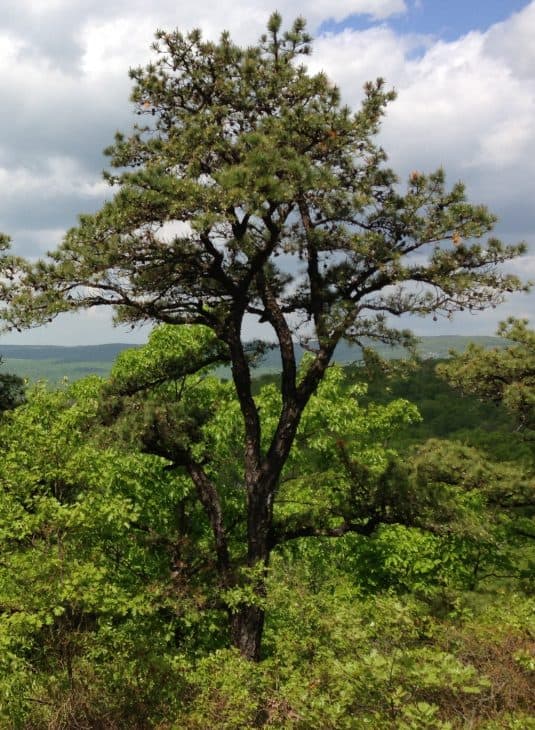
The Pitch Pine tree is native to West Virginia and can grow as tall as 50 to 80 feet. It is an evergreen tree that grows well in sandy and dry soil. Bunches of three needles are 3 to 5 inches in length and yellowish-green. They have a rigid, pointed tip, can be linear or slightly crooked, and last for two to three years on trees.
22. Sweetgum (Liquidambar styraciflua)
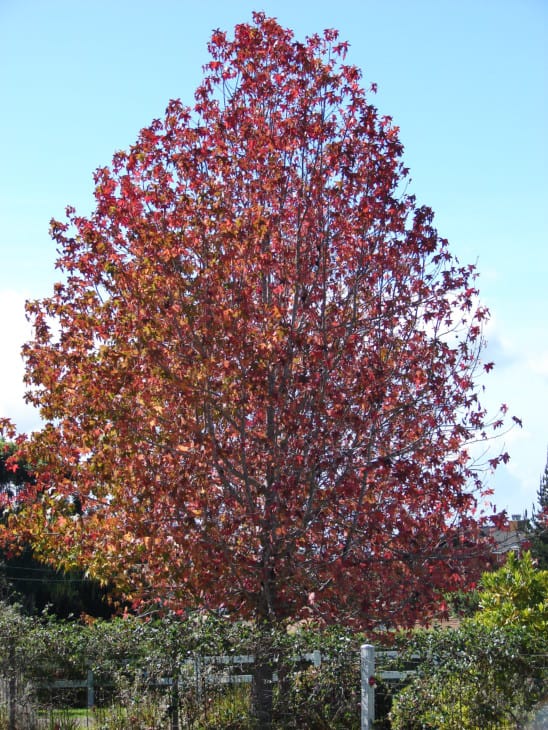
Sweetgum trees are known for their astonishingly straight growth, attaining up to a height of 120 feet and breadth of 4 feet or more. These trees thrive in sunlit locations with non-alkaline conditions, and they can be observed throughout the Southeast, mainly in wet regions such as swamps or riverbanks. Sweetgum produces bright foliage that turns yellow to orange to brown in the fall.
23. Sycamore (Platanus occidentalis)
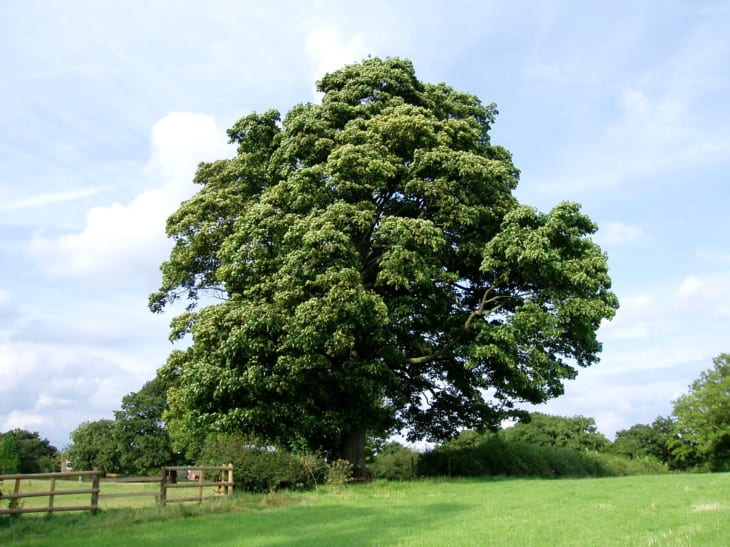
They can mature to be massive trees with towering white tree trunks that stick out in a winter landscape. The wood of all Sycamore species tears off in randomly formed sections as they age. The Webster Sycamore grows as high as 112 feet with a wide crown, and it can live for hundreds of years. It is popularized as the largest living tree in West Virginia.
24. Yellow Birch (Betula alleghaniensis)
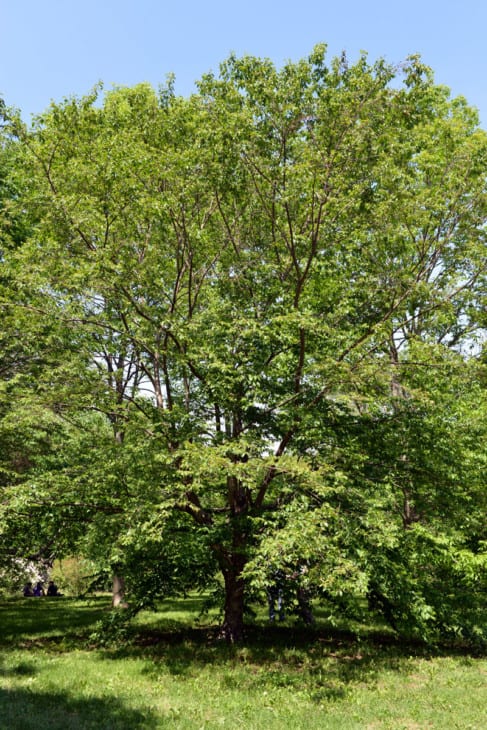
Yellow Birch trees have a golden gray to bronze bark that separates at the surface and peels into thin, papery, curly strips. Its leaves have sharp margins and grow 3 to 4.5 inches long. It grows as tall as 60 to 80 feet high and has a trunk with a width of 2 to 3 feet. They are long-living trees that flower with catkins in spring.
25. Sourwood (Oxydendrum arboreum)
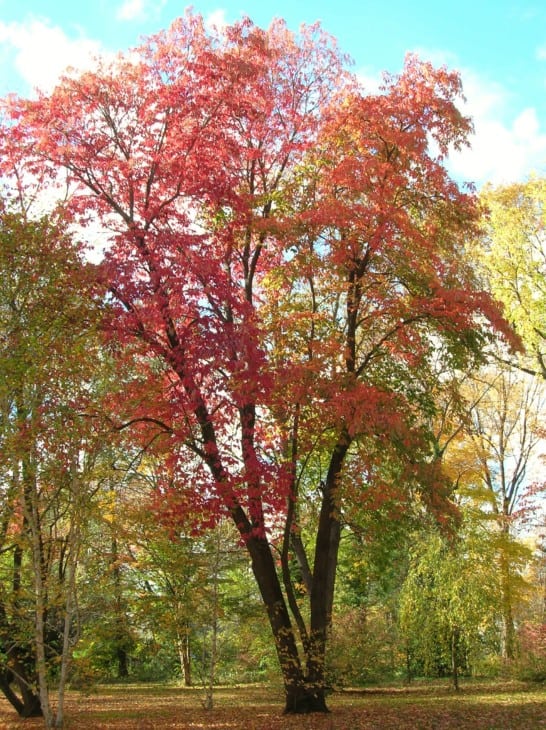
Sourwood trees are little trees that grow to be roughly 50 feet tall and have a width of almost one foot. Their tasty nectar, which is used to make honey, is well-known. When planted in full light, its fall leaves turn a fiery red color. Sourwood trees are yet another species in West Virginia responsible for providing bright red shades in autumn.

